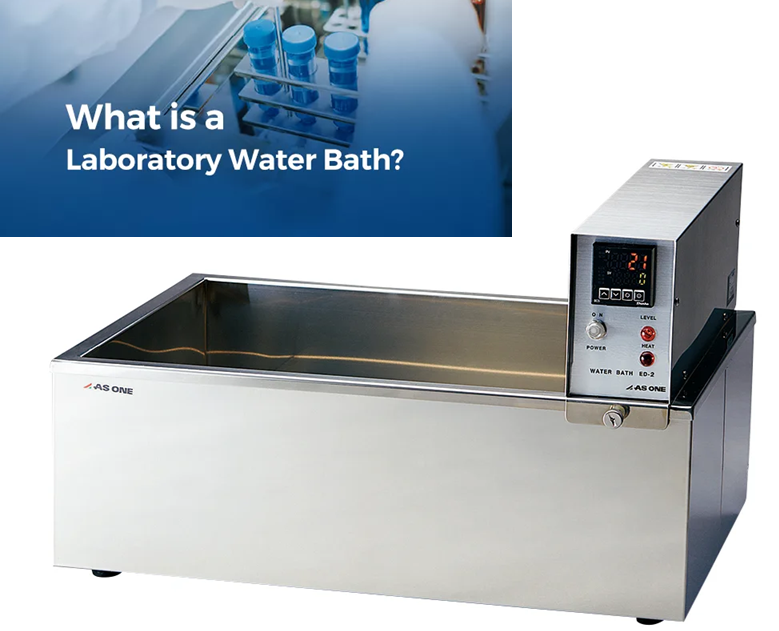
1/ Introduction and Definition
A laboratory water bath is an instrument designed to maintain liquid samples at a precise and uniform temperature over extended periods, using water as the heat transfer medium. It replaces direct flame heating for temperature‐sensitive or flammable samples and supports applications ranging from enzyme kinetics to microbial incubation. Most models offer digital or analog temperature control interfaces and capacities from 12 to over 100 liters.
2/ Key Components and Construction
The core components of a typical water bath include:
- Container (tank) Made of insulated stainless steel to resist corrosion and minimize heat loss.
- Lid Constructed from heat‐resistant glass or metal to reduce evaporation and contamination.
- Heating element Electric resistive coils or heaters submerged at the base of the tank.
- Temperature sensor RTD (PT100) or thermistor probes positioned centrally for accurate temperature feedback.
- Controller Thermostat or microprocessor‐based PID controller, often with SSR (solid‐state relay) for precise regulation.
- Stirrer or circulator Magnetic stir bar or pump to ensure homogeneous temperature throughout the bath.
- Drain tap Simplifies fluid exchange and cleaning.
- Indicator light or display Communicates heating status and setpoint achievement.
- User interface Analog knobs or digital keypad with LED/ LCD display for setting and monitoring temperature.
3/ Classification of Water Baths
Different experiment demands have led to specialized water bath configurations. The table below contrasts the main types:
|
Type |
Principle |
Typical Applications |
|---|---|---|
|
General-Purpose Bath |
Natural convection, no circulation |
Routine heating, sample thawing, reagent warming |
|
Circulating (Stirred) Bath |
Active circulation for uniform temperature |
Enzyme assays, serology, precise analytical reactions |
|
Shaking Bath |
Built-in shaker platform plus heating |
Cell culture, bacterial incubation, homogenization |
|
Refrigerated Bath |
Heating and cooling via compressor or Peltier |
Low-temperature incubations, stability studies |
|
Ultrasonic Bath |
High-frequency sonic waves for cleaning |
Labware cleaning, degassing, sample preparation |
|
Oil/Silicone Bath |
High-temperature fluid for >100 °C operations |
Organic synthesis, high-temperature reactions |
4/ Operating Principles
Water baths operate by converting electrical energy into heat and regulating it via feedback control:
- Analog models use a mechanical thermostat that closes or opens the heater circuit as temperature crosses the setpoint.
- Digital systems employ a PID algorithm and SSR to modulate heater power, cycling on/off at precise intervals to maintain temperature stability.
- In both designs, the temperature sensor measures fluid temperature, converts it to an electrical signal, and sends it to the controller, which adjusts the heater accordingly.
5/ Temperature Control and Sensing
Accurate temperature control hinges on sensor and controller performance:
- RTD (PT100) sensors offer +/-0.1°C precision and rapid response.
- Thermistors can achieve similar accuracy but typically over a narrower temperature range.
- PID controllers compare the measured temperature against the setpoint and dynamically adjust heating power to minimize overshoot and oscillation.
- Solid-state relays extend component life by eliminating mechanical contacts and reducing switching noise.
6/ Calibration and Performance Metrics
Calibration ensures that displayed temperatures match actual values. Key performance metrics include:
|
Metric |
Definition |
Typical Requirement |
|---|---|---|
|
Stability |
Maximum deviation over time at a fixed setpoint |
<=+/-0.05°C for general baths; <=+/-0.01°C for calibration baths |
|
Uniformity |
Maximum temperature difference between points within the bath |
<=+/-0.1°C over sample zone |
|
Accuracy (System) |
Combination of digital setting accuracy and annual drift |
+/-0.2°C to +/-0.5°C depending on model |
|
Digital Setting Error |
Difference between controller setpoint and actual heater activation threshold |
<=+/-0.1°C |
Calibration protocols typically require filling the bath with water, stabilizing to the setpoint, and measuring temperatures at multiple locations using traceable reference probes. Performance is certified against standards such as NVLAP or DIN 12876 .
7/ Applications in Laboratory Settings
Water baths are ubiquitous in research and clinical labs:
- Incubating enzyme reactions and kinetic assays at controlled temperatures.
- Warming reagents and thawing frozen samples without hot‐spot degradation.
- Maintaining media for microbial and cell culture growth under gentle shaking or static conditions.
- Supporting analytical instruments (viscometers, colorimeters) that require stable preheated samples.
8/ Maintenance and Safety Considerations
Proper maintenance and safe operation preserve performance and extend service life:
Daily and Weekly Tasks
- Use distilled water to prevent scale and corrosion.
- Verify water level covers the heating element.
- Drain and clean the tank with mild detergent to remove deposits.
Periodic Checks
- Descale heaters when mineral buildup appears.
- Inspect sensors and wiring for damage or corrosion.
- Calibrate temperature sensors at least annually.
Safety Precautions
- Never operate the bath dry.
- Keep electrical components dry and avoid overfilling.
- Wear insulated gloves when removing hot samples.
- Always replace the lid after sample manipulation to minimize evaporation and contamination.
9/ Selection Criteria and Advanced Trends
When choosing a water bath, consider:
- Temperature range and stability requirements.
- Bath volume and spatial footprint.
- Need for circulation, shaking, or refrigeration functions.
- Sensor and controller accuracy.
- Connectivity options (USB, RS-232, Ethernet).
- Support for data logging and remote monitoring.
Emerging trends include IoT-enabled baths with real-time cloud monitoring, modular multi-zone temperature control, and alternative heat transfer fluids such as ionic liquids to broaden operating ranges and reduce energy consumption.
Where is the best place to buy a water bath?
You can buy a water bath from many distributors, but you should choose to buy from a long-standing reputable unit like QTE Technologies (qtetech.com/en).
QTE Technologies is proud to be a global MRO provider, serving customers in more than 180 countries and always trying our best to ensure customers have a complete and satisfied experience. We were founded in 2010, providing more than 1 million products for every industry and science and technology. In addition, you can contact us anytime via 24×7 chat support, phone, WhatsApp or email. Discover what our valued customers say about our services on our dedicated review page.
Author: Editorial Board of QTE Technologies (with a solid background in both engineering and innovation - accumulated over 15 years of experience).




